#uk moth species
Text

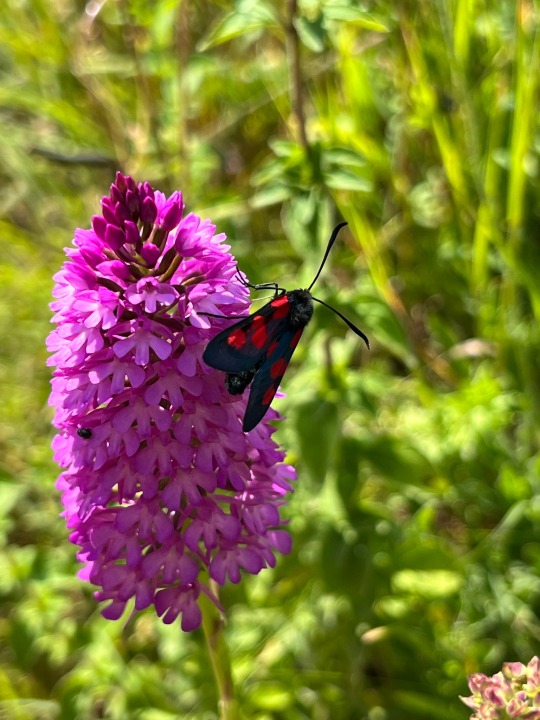
Six spot burnet moth on a wild orchid, South Downs, UK
(C) do not use, edit, reupload
#moth#Lepidoptera#uk moth species#uk insects#orchid#chalk upland#british wildlife#ghosti’s photography#non monster post
95 notes
·
View notes
Text
I need you all to know 🍬 is subscribed to so many taxa on iNaturalist that he's gone through 3 or 4 pages of observations on our dashboard and only managed to get back to the ones from half an hour ago
#personal#thoughts#🦋 post#iNaturalist#he's subscriped to: sphingidae; plebejus melissa; plebejus fridayi; icaricia acmon; icaricia lupini; icaricia shasta;#brephidium exilis; and then just all the UK's lycaenidae observations#he decided he wants to see every sphinx moth in the world and every gossamer-winged butterfly in the UK#and several blue butterfly species from elsewhere
2 notes
·
View notes
Text
Best time of year is when I have to double check that the moths who are sleeping on my ceiling aren't planning on dying there lmao
#They're just lil guys#I have so many in my room and idc at this point#They are all friends#I moved a few things around today and surprise#Moth friend :))#At least 2 came our of my various hats thst I loved#And several were disturbed when u opened the curtain#Generally tho most of them are resting on my ceiling right now#But yeah there were some which hadn't moved since I'd woken up so I just kinda hovered my hadn near them to encourage them to move#I'm in the UK so there's only two species of quite small moth thst hang around anyways lmao#moths and butterflies#moths#goblincore
2 notes
·
View notes
Text


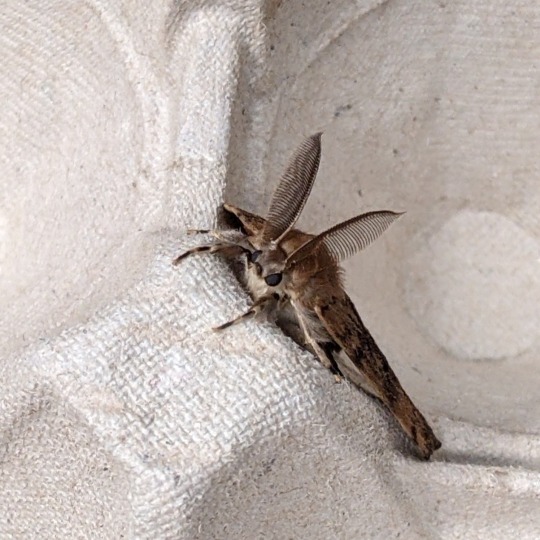
It's been too rainy for the moth-trap the past few days, so please enjoy this spongey moth (Lymantria dispar) that visited last year, with it's magnificent antenna & big round eyes. May we all have days of looking this fabulous.
This moth feeds on various trees, and can cause significant forestry problems in areas where it's been introduced by humans. (We're great at transporting species around the world, dropping them in areas outside their natural range, and then complaining about what they do there.)
Luckily for this particular moth, the species isn't listed as a pest or reportable in my area, so it flew on about its day. We don't see spongey moths every year in this part of the UK, so I enjoyed it's visit!
#motivational moth#bugblr#moth#moths#insect#insects#lepidoptera#nature#cool bugs#pretty bugs#cute bugs#cute moth#pretty moth#bug#bugs#garden wildlife#wildlife#entomology#moth trapping#moth trap#team moth#cw insects#cw bugs#cw moths
639 notes
·
View notes
Note
I am a very normal person who gave her real life cats warrior names, and now I am being a very normal person who spends her lunch break translating them into Clanmew:
Owlberry: Huobayab. Huo (eagle owl) + bayab (blackberry/brambles). She’s a big, fluffy, mostly dark brown cat who is motherly and protective but can definitely be very prickly, so I think it fits well. Her real name is Cheesecake.
Batwhisker: Fepfr’hussk. Fepfr (long eared brown bat) + hussk (whisker). The first thing I said upon seeing him, an eight week old bundle of rage, was “Oh my GOD his EARS” so I love this. He’s a tuxedo with big ears and BIG whiskers. His real name is Junior Bacon Cheeseburger. Fun fact: nothing is legally stopping you from naming a cat Junior Bacon Cheeseburger.
Poppyfang: Liafiki. Liafi (poppy) + ki (fang). She’s a calico and her real name is Poptart. This sounds very dainty and pretty which is very accurate to the real cat.
Turtlecloud: this is where I need help; is there a Clanmew word for Turtle yet? Google tells me they’re not native to Britain which genuinely surprised me. Of the introduced species I found on Wikipedia, she vaguely resembles the European pond turtle, she’s a dark tortie with a few specks of very bright orange. Her suffix will be -hai (fat cloud) because good lord she is a fat little cloud. Her real name is Ginger, and she is Poptart’s wikffra.
Hazelsnap: Her prefix was originally meant to reference hazelnuts, but after searching the spreadsheet I love Geehees- (hazel slender moth) for her, because it looks pointy and weird, and the real cat was the pointiest and weirdest animal I ever met, plus she was very small and flighty like a moth. I referenced my silly nickname for her, based on the noise she used to make, to invent the word “grecc”— the “ekh” noise cats make when you startle them, the Activation Noise, a sudden surprise. Geehees’grecc. Her real name was Hazel Grace/Grecc and she has since gone to walk in Starclan, and is squinting at me judgmentally even as I type.
It is such a shame that mainline WC doesn't do more with the idea of a cat carrying multiple names, unironically they should have taken inspiration from Cats: The Musical for that. You are doing the lord's work by sharing the kittypet names, love it
I'll give you two new words plus related terms, just to get a Clanmew phrase for hazel trees out there, though I'd absolutely keep Hazelsnap's prefix as Geehees because that's perfect.
Turtle = Ooba
Turtles are an invasive species in the UK, you're correct! They are released as a product of the pet trade, where they can wreak havoc on water ecosystems. They tend to like ponds and lakes more than rivers, though.
So it's usually ShadowClan that's encountering them, and they have a FAVORITE use for the little guys... their shells make perfect soup bowls.
The word for "Turtle" and the word for "Bowl" are the same. A bowl of turtle soup is an Ooba-en-Soogwa Ooba (Bowl/Turtle-of-Soup Bowl/Turtle). Turtle shells are also valued as decorative dishes, almost like our idea of 'fine china.' It's a morbid joke in ShadowClan that the first food a bowl holds is the turtle that it used to be.
(I need to come up with some kind of phrase similar to "having your own ass handed to you" but it's "Being served in your own shell." "He made you into the bowl AND the soup")
Stumptail's daughter Turtlebelly in Clanmew is Oobaboma. Bowl-Belly.
Unfortunately for Clan cats but FORTUNATELY for the ecosystem, there aren't any turtles in the Lake territory. Not ones that breed, anyway, ShadowClan has immediately killed the 2 or 3 irresponsible releases that have occurred in the past 10 years since they've been here.
Hazel (Corylus avellana) = Ans
One of the most important trees for Clan use. It's a small, thin-wooded plant that makes the PERFECT size for harvest. It's the wood that WindClan tends to use to reinforce tunnels, it's supple and strong enough for use in building, and produces helpful "cob" nuts that can be used as a prey lure.
In BB, Hazeltail's name, her whippy tail like a hazel branch, and young wisdom were taken as a sign that she would one day be a fantastic builder. Since she's not dead in this AU she is going to be rising through the ranks there.
Most Clans don't have a particular word for Hazelnuts. They call them Nekboq Ans. ThunderClan, however, uses them as prey lures on a frequent basis. They call them Ansneb, and it is part of a 3-stem verb "to lure."
Lured/Luring/Will Lure = Ansnebok/Ansnebo/Ansneb
As a prefix in a name, Ansneb is best translated as "Cob" or "Hazelnut," but based on context can mean "alluring," "tempting," or "bait."
74 notes
·
View notes
Text
@grave-owen submitted: Bit of a long shot here, I live in the uk, I found these little dude in my snap peas, but I don't want to put him outside just yet. The peas are originally from Egypt and I didn't want to risk it not being a local species. Any ideas?

The little guy has 4 sets of prolegs, so I don't think it's a sawfly larva, and very fine hair up on its head. It's also about 3-4 cm long. I hope the extra info helps!
Hi, sorry it took me a while to respond, hopefully the lil guy is still kickin! It's a noctuid moth caterpillar, and most likely a cotton bollworm, which is very common and their host plants include lots of vegetable crops and definitely peas. It is native to the UK and is found throughout Europe too, so you can safely release it if you'd like.
96 notes
·
View notes
Photo

Fireweed (Chamaenerion angustifolium)
Family: Evening Primrose Family (Onagraceae)
IUCN Conservation Status: Least Concern
Growing rapidly and reproducing very frequently, Fireweed thrives in areas that have been recently cleared of other plants due to forest fires or other disruptive events, earning it its name. Widely distributed throughout the northern hemisphere, it is a textbook example of a pioneer species (the first species of plants, or other non-motile organisms, to spread onto land that has been cleared of its previous occupants) ; unable to compete with taller, more “aggressive” species of plants that will have taken over older habitats, its seeds remain dormant in soil for years at a time, while adult plants may remain in small numbers in clearing or frequently-disturbed forest edges, or may be entirely absent. When a fire occurs the seeds respond to the heat and begin to germinate, allowing young individuals to emerge after the fire has subsided and most potential competitors have been eliminated. After sprouting, young Fireweed can reach considerable heights (potentially growing to be up to 2.5 meters/8ft tall, although in areas with limited resources they may never exceed 0.5 meters/1.6ft) and, upon reaching maturity, will develop numerous 5-petaled pink flowers each year that, once pollinated, develop into long strings of tiny seeds covered with cottony parachute-like structures that allow them to be carried away from their parent on the wind, settling in new ground where they may later germinate. Members of this species can live for several years, but as slower-growing but taller and more competitive plants gradually return to a cleared area Fireweed populations will gradually decrease as their access to sunlight and soil nutrients is reduced. As such, once an area has “healed” from the disturbance that cleared it, adult Fireweeds become rare once again, but the seeds they produced when more abundant remain dormant in the soil until another disturbance provides them with an opportunity to grow. In human-influenced habitats faced with near-constant disturbance (such as railways or roadsides,) it is possible for adult Fireweeds to remain abundant permanently, and the ease at which members of this species adapt to urban environments, combined with its impressive hardiness, has led to it becoming somewhat prominent in folklore, featuring on the flag of the Canadian territory of Yukon, being referenced in the works of Rudyard Kipling and J.R.R Tolkien, and earning the name “Bombweed” in the UK after large numbers of Fireweeds were observed growing in the ruins of bombed-out buildings leveled during World War II. Ecologically, various species of deer, bears and hawk-moths are known to feed on the leaves, flowers, nectar and seeds of this species.
--------------------------------------------------------------------------
Image Source: https://www.inaturalist.org/taxa/564969-Chamaenerion-angustifolium
#fireweed#Chamaenerion angustifolium#plant#plants#flowering plant#flowering plants#angiosperms#angiosperm#biology#botany#wildlife#African wildlife#north american wildlife#Asian Wildlife#European wildlife#ecological succession#ecology#flower#flowers
64 notes
·
View notes
Note
Did you see about the new moth species that was discovered in London?
yes!! It reminds me of the Manchester Moth pictured below:

there are only three specimens in existence and it's considered extinct. It's crazy how much the micromoths go so unnoticed that there could be lots more undiscovered species in the UK.
25 notes
·
View notes
Note
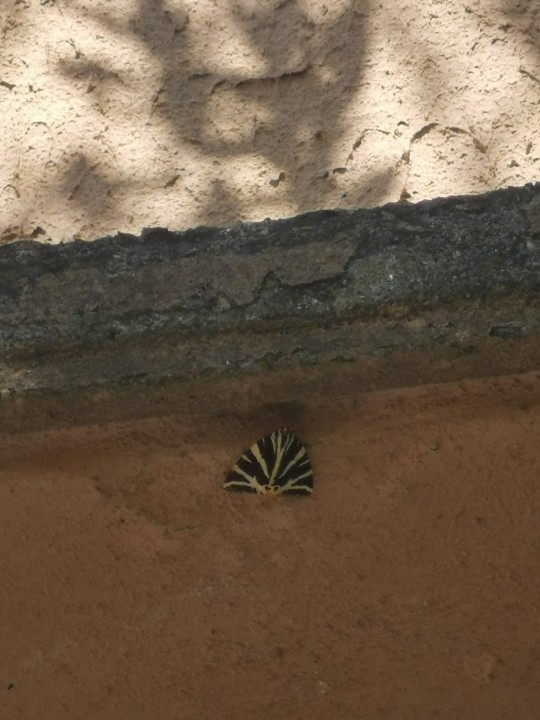
I found this little guy outside my house. Do you know what it could be perhaps? It's a uk species if that helps (cant give specific place in case i get doxxed lol)
Love all the moths by the way! :D
Might be a Euplagia quadripunctaria
43 notes
·
View notes
Text
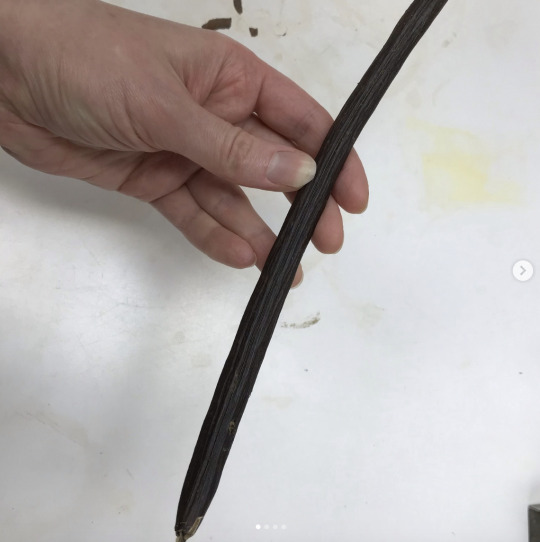

Today as I was walking to work, I passed by a Catalpa tree that grows wedged in between buildings and overspreads a parking lot. I wanted to get a seed pod so I could try germinating some seeds and grow my own Catalpa, but sadly all the seed pods on the ground were broken and muddy. All the pristine seed pods were high out of reach in the lofty boughs of the Catalpa. In disappointment, I muttered, "I wish I could get an intact seed pod". Suddenly, I heard a loud "crack" and a perfect clean seed pod fell from the tree and landed at my feet. I was so astonished that I said "thank you so much, Catalpa tree!" out loud. It makes one wonder if there's something to the old mythology of Dryads, Huldra, and Yakshini after all...
With its white orchid like flowers and parasol leaves, the Catalpa is a popular ornamental tree in the UK. This tree is commonly called the "Indian Bean Tree", which has misled many people to think it comes form India. In fact, the Catalpa is native to the Southern USA and the "Indian" in the name is the outdated term for Native Americans. Relatives of this tree are found in North America, the Caribbean, and East Asia.
The Catalpa has a curious relationship with a caterpillar. Catalpa trees are relatively pest and disease free due to the high concentrations of iriod glycosides in the plant tissue. The Catalpa Sphinx Moth (Ceratomia catalpae) caterpillars exclusively feed on the Catalpa and sequester the toxins in their own bodies, making the caterpillars unappealing to their usual predators. Research shows that one species of Catalpa (C. speciosa) reacts to caterpillar damage by releasing nectar from glands that attracts ladybirds and ants, which prey on the caterpillars.
#katia plant scientist#botany#plant biology#plants#plant science#nature#seed pods#trees#tree seeds#bean#catalpa#flowering tree#ecology#caterpillars#sphinx moth#toxins#native americans#dryad#tree spirit#serendipity#plant facts#plant scientist#plantblr#seeds#grow your own#botanical#plant aesthetic
18 notes
·
View notes
Text
Moth of the Week
Comet Moth
Argema mittrei
TW: Trypophobia for pictures
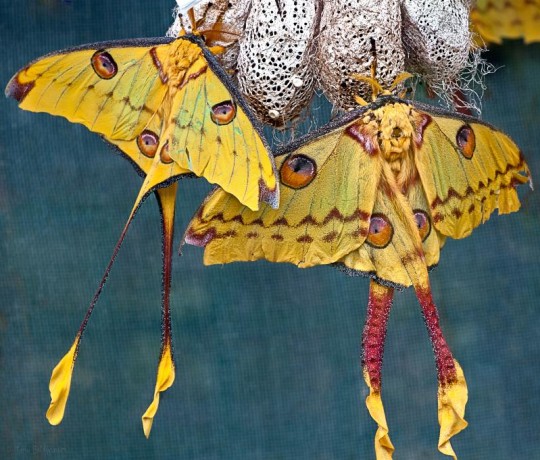
The comet moth or the Madagascan moon moth was first described in 1847 by Félix Édouard Guérin-Méneville. This moth is a part of the Saturniidae family and is one of the largest silk moths. This species receives its genus name Argema, meaning 'speckled eye' in Greek, from the large eyespots on its forewings and hindwings. Additionally, the name comet moth comes from their long hindwing tails.
Description The comet moth has large yellow wings with magenta patterns by the head, at the tips and outer margin of the forewings, the top and bottom of the hindwings, and the stem of the hindwing tails. Furthermore, the top edge of the forewings, outer edge of the hindwings, and both sides of the tail are outlined in black. Each of the hindwings and the forewings have large magenta and orange eyespots also outlined in black. The final touch on the wings are white accents by the head and in the eyespots. The body of the comet moth is yellow or a yellow-orange with the top of the legs matching then fading to black. They also have orange antennae.
Females have more rounded wings and larger bodies for egg laying
Average male wingspan: 20 cm (≈7.9 in)
Average male tail span of 15 cm (≈5.9 in)
The males have a longer, more feathery antennas than the females to pick up mating pheromones
Males have longer, thinner tails while females have shorter, thicker ones
Diet and Habitat This moth’s diet and host plants include the smoke tree, the marula tree, the Brazilian peppertree, and the cider gum tree. Most sources say adult moths do not feed because of their inability to use their shrunken mouths. Comet moths are native to Madagascar and nowhere else in the world. Their natural habitat are the Madagascan rainforests. However, they can and have been bred in captivity. Today due to habitat loss, their range is limited to the rainforests located south and east of Madagascar’s capital.
Mating Female moths release and pheromone to attract male mates, who fly to find them. After mating, the females lay 120 to 170 eggs on the host plants that will hatch into caterpillars in 10 to 20 days.
Predators Chameleons, geckos, bats, and birds prey on comet moths. To combat this, the comet moth uses its colors to camouflage itself. Additionally, it uses its long tails to mess with a bat’s echolocation and cause it to attack the tails instead of the moth’s vulnerable body. Furthermore, this species has the ability to use ultrasound absorption so the bat’s echo will come back fainter, and the moth is harder to “see.”Finally, the wing’s eyespots are used to fool predators into thinking the comet moth is a more dangerous animal. The largest current threat to comet moths are humans, and this moth is now endangered sure to habitat loss.
Fun Fact This moth used to be on the 1000 Malagasy ariary banknote.
(Source: Wikipedia, AZ Animals, Natural History Museum UK, The Company of Biologists, Moth Identification)
#animals#facts#insects#libraryofmoths#bugs#moth#mothoftheweek#lepidoptera#comet moth#madagascan moon moth#late post#sorry#tw: trypophobia#Argema mittrei#Saturniidae
37 notes
·
View notes
Text
Endangered Moth Makes Comeback
The barberry carpet moth is one of the UK’s rarest invertebrate species, with only 12 known populations, but now it has seen a resurgence in the Blandford Forest, Dorset following a project to restore its habitat.
With the help of volunteers, the Forestry England and Butterfly Conservation project planted the native barberry plant in Blandford Forest, resulting in an increase of larvae found in the forest from 14 in 2018 to 50 this year. The conservationist Mark Parsons, who carried out the survey, told the BBC; "This year's fantastic result clearly demonstrates what can be achieved by working together with relatively little, but regular and annual resources... with larvae found on nearly every bush looked at during this year's survey."
Throughout the 19th century, the barberry plant was cleared from hedgerows because it was believed to be a vector for wheat rusk fungus, which is a problem for the barberry carpet moth, because it’s caterpillars depend on it quite heavily. Modern strains of wheat are resistant to the fungus, so barberry can be grown wherever its needed.
Forestry England wildlife ranger Mark Warn told the BBC; "A lot of the conservation work we've done is rebuilding species resilience so we haven't just got one site, we've got a number of sites across Blandford Forest.”
With more planting of the barberry plant, who knows how much the populations of the barberry carpet moth might increase by.
Source: BBC News
#Science#science communication#scicomm#stem#science education#wildlife#Months#conservation#endangered species
100 notes
·
View notes
Text
HD Mostly set outside the UK fic recs - Others
Here are a few drarry recs that are mostly set in outside of the UK, North America or the EU. Listed in alphabetical order.
Aeternus Solem by @onbeinganangel [36k]
On December 1st, Harry Potter gets sent halfway across the world to attempt to break a possibly fatal curse on an unnamed British Unspeakable — except said Unspeakable is not unnamed at all and Harry has been in love with him for over four years.
Ai by talkplaylove [18k]
Harry Potter wanders into a bar.
Call Me by Your Name (And I’ll Call You by Mine) by @acupforslytherin [35k]
My dearest Harry, because no matter how far we are, even two different worlds apart, I can never tell where you end and I start.
Draco never expected Potter to find his way back to his life, especially after seven years of no contact, but here he was. With Potter’s will in his hands, his own name written in that untidy scribble he recognized anywhere, Draco had to accept this was his time to reopen an old wound, revisit painful memories, and relearn everything he thought he knew about his past.
Connecting Lines, Connecting Crimes by sleepstxtic [15k]
Magic is going haywire after ley lines all over the world are mysteriously failing. A cross-border Task Force is set up by the League of Wixen Nations with Expert Cartologist Draco Malfoy and Ley Line Specialist Pansy Parkinson being called in from Britain to work with Magi-Geographers Harry Potter and Parvati Patil in India. But can they get to the root of the issue before it’s too late?
Featuring: an excessive use of holograms, numerous references to food, and lots and lots (and lots!) of travel.
Forged through flowing water by @tedahfromtayla [40k]
When Hermione sets up a diplomatic mission to begin repairing the damage British colonisation did to Indian magical communities Harry isn’t going to pass on the opportunity to visit and help his family’s home country. Maybe he should have asked a few more questions about the personnel she had recruited for it before signing on because Malfoy surely has an ulterior motive to be there.
Or
Harry goes back to India to rediscover some of his lost roots. He meets Malfoy there. Hijinks ensue!
The Great Magic Sex Mushroom Fiasco by Magnolia822 [6k]
Lost in the Siberian wilderness without food, Aurors Potter and Malfoy are forced to improvise, with unexpected consequences …
Grounds for Divorce by Tepre [122k]
Malfoy finds a coin. Harry finds a letter.
A story about histories, a story about families. A story about a lemon tree somewhere in Upper Egypt.
Potential Gravity by @lol-zeitgeistic [32k]
Draco is not good at Cards Against Humanity, but Harry’s not good at being human, so it all works out. Except for the explosions. And Harry’s inability to live when Draco’s not around.
Sæglópur by @femmequixotic [34k]
After a difficult breakup, Draco finds himself dragged to the land of magic, law, and natural wonders where, of course, nothing goes as planned.
The Spider and the Moth by marguerite_26 [10k]
Young Auror Harry Potter is sent to Morocco to investigate a potion smuggling ring. He quickly realises he’s in over his head with both the assignment and the primary suspect.
Survival of the Species by @romaine2424 [46k]
Draco approaches Harry on the 9 ¾ platform, after their sons have boarded the Hogwarts Express, and invites him over for tea. The discussion they have leads them on an adventure that neither could have expected. There be dragons! HPDH compliant.
Ticking Time by calrissian18 [5k]
Draco moves to Egypt to escape his past. Of course Potter has to come along and be a tangible representation of it.
Through Worlds by @rain-beee [42k]
Harry is looking for a new start, and he’s travelled the world to find it. Now in Japan, a chance encounter with someone from his past threatens to distract him from his goal, but when he runs into them again and again, he begins to wonder if maybe he’s found what he was searching for all along.
The Unspeakable by @the-sinking-ship [24k]
Healer Draco Malfoy took the job at the International Department of Mysteries for the paycheck and the prestige.
But what he got was Unspeakable Harry Potter and the most fascinating curse he’d ever seen.
I hope you enjoy these stories as much as I did!
66 notes
·
View notes
Text
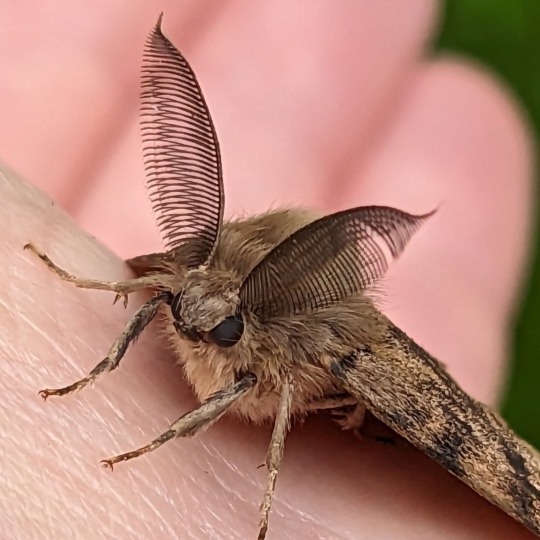

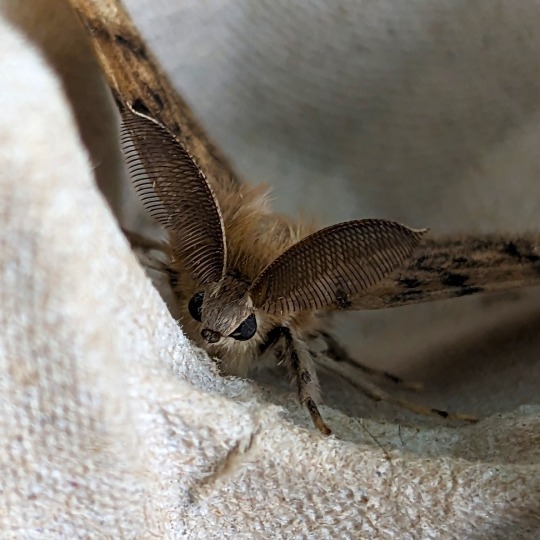
Please enjoy the delightful antennas of these male spongey moths while I wait for spring and moth season.
This species is a relatively infrequent visitor in my area of the UK. In some countries/regions it's considered a pest on trees, but it's not reportable here - so these glorious beasts went on their way after I logged their visits
May we all have moments of looking this magnificent 💖🦋
#moth#moths#motivational moths#lepidoptera#bugblr#insect#insects#nature#entomology#wildlife#cute animals#cute bugs#cool bugs#bug#bugs#pretty bugs#pretty moth#a beautiful friend#team moth#teammoth#moth trap#moth trapping#cw insects#cw bugs
130 notes
·
View notes
Note
do your cats recognize invasive-ness? i was reading your custom moth/butterfly taxomomy and it reminded me of spotted lanternflies (which are not in the UK i think?) so i got curious
Yes, AND I am willing to use StarClan to let them know about certain long-term damages that some species do that they may not know about on a short timescale,
BUT
That's all within reason! Ecologically speaking, not every non-native species is invasive, and there are some species which the Clan cats can't get rid of. In addition; the environment of Sanctuary Lake is different, in some aspects, from the environment of White Hart.
Here's a couple of the examples that are particularly interesting off the top of my head;
Sycamores and Spottedleaf's tar-spot blight are exclusive to the White Hart. They are an American species, and were deliberately planted.
Cedars are exclusive to Carrionplace, they were planted to help with the smell.
The pine plantation that ShadowClan's Bog Project decimates was mostly sitka spruce with an occasional douglas fir, they had never seen a douglas fir until Sanctuary Lake
They are not aware that Signal Crayfish are invasive. Signals spread a disease that is almost 100% fatal towards the native Whiteclaws. The species cannot coexist in the same ecosystem.
Clan cats fucking hate Gray Squirrels, every time canon has a 'pointless argument' about squirrels crossing the ThunderClan border, in BB that is a very real point of anger about other Clans doing unauthorized hunting of Red Squirrels.
Part of why ThunderClan is seen as so 'pushy and bossy' is because they are self-proclaimed Red Squirrel Defenders
Without getting into the cultural significance of this, it has to do with Thunderstar (righteous, defender of the weak, Our Glorious Leader) and Skystar (treacherous, hater of the weak, Their Barbarous Dictator)
Minks. Clan cats fight Minks constantly. River otters leave them alone, but minks are notorious prey-stealers (and RiverClan is probably looking for an excuse to get at those pelts)
Muntjacs are what humans consider an invasive species, but Clan cats actively manage their populations. They're the perfect size of deer to hunt and they produce very valuable pelts.
Rhododendron is uprooted ASAP because it gets out of control fast. This is StarClan knowledge.
Giant Hogweed is an IMMEDIATE danger and killed as soon as it's spotted. It's noxious, it spreads like wildfire, it gets so big it's impossible to handle. If I wasn't working with canon and had Thistleclaw to make a name pun out of, I would have used Giant Hogweed as the authoritarian parable. Ecologically speaking Thistles are actually very valuable for pollinators and are a pioneer species-- Giant Hogweed should die by my hand
58 notes
·
View notes
Photo
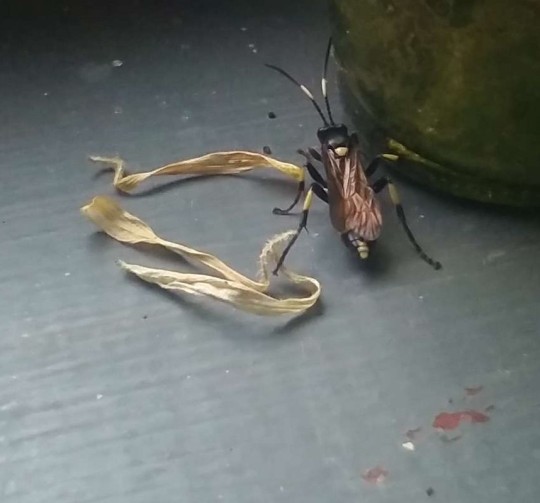
@owlbear33 submitted: have this picture of what I think is a sawfly or maybe a wasp I found in my back porch (photo taken 29/04/23 in mid wales UK), would love to know more about what it is if you have that info
What a cutie! This friend is a yellow-tipped Darwin wasp, Ichneumon stramentor, which is a type of parasitoid wasp. This one is a female - males will have all black antennae. Ichneumonids have different hosts depending on species but I think this one specifically uses Noctuid moth caterpillars :)
97 notes
·
View notes